In this week’s post I am looking at two of my favourite paintings: one from Vanessa Bell and the other from Duncan Grant, both of their garden at Charleston and both bring me joy. Over the past week I have been pulling apart my garden and my studio to sweep away the last few months and create a clean slate. Come and see how I got on…
(To see the full post on email, you will need to click on the post and open the app.)
Duncan Grant, Garden Path in Spring, Oil on canvas, 1944, H 91.3 x W 83.2 cm, © Estate of Duncan Grant
‘…the garden here was not a gentleman’s garden or a gardener’s garden, it was always an artist’s garden’ Angelica Garnett
I first saw this painting at a glorious exhibition held at The Garden Museum last summer called “Gardening Bohemia: Bloomsbury Women Outdoors” and immediately fell in love with it. Painted by Duncan Grant (1885 - 1978), the lover and companion of Vanessa Bell (1879 - 1961), it captures the efflorescence of a garden in late spring, with bright patches of sunlight falling across the gravel path. The old roses are yet to bloom, but there are forget-me-nots, wallflowers, and iris germanica by the pillar to the right. The edges of the path are fringed with pinks, soon to flower, and the glaucous green, upright brushstrokes suggest the early growth of oriental poppies and acanthus. The whole painting dances with light and energy.
Yet this was painted in 1944, in the midst of the Second World War, when hope was thin. Here is a place of profusion and life and of the arrival of spring. The composition of the painting too shows that it was a place of precious refuge: there is no sky showing above the enclosing blossom, it is a complete, contained world away from outside troubles.
I find it impossible to worry in a garden, somehow the world slips away as you weed and preen and plan for the months ahead. Encouraged by
I have ruthlessly removed any tired plants and divided those who are being thuggish, leaving room to breathe for those that remain. It is hard to imagine how these small green patches will spread and overflow in the coming months, and I thought it might be fun to take a snapshot each week to record the changes, so here is the first:
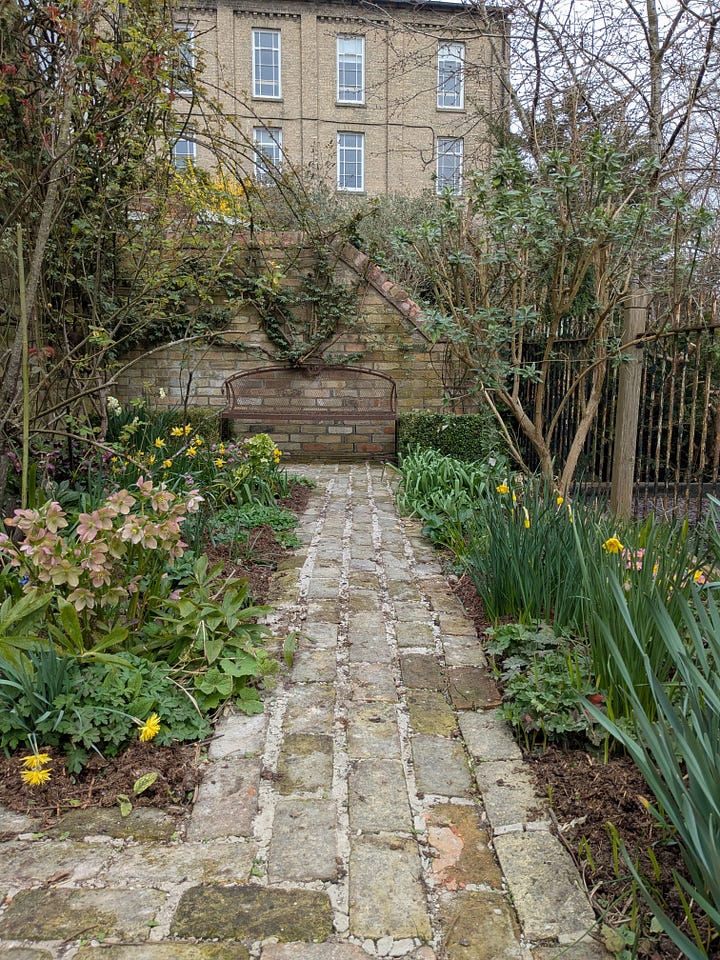
She often went into her garden and got from her flowers a peace which men and women never gave her. Virginia Woolf
Vanessa Bell, View into a Garden, oil on board, 1926, H 70 x W 56 cm © estate of Vanessa Bell
The second painting looks out from Vanessa Bell’s studio into the garden. It is later in the season. The trumpets of white lilies are about to open and the vase on the table is plump with blooms picked from the borders - are some carnations or Brompton stocks, I can’t decide.
Vanessa Bell arranging flowers outdoors and Duncan Grant standing nearby, undated. Virginia Woolf Monk's House photograph album, Houghton Library, Harvard University. Cambridge, Mass.
Chocolate velvet curtains are parted and we see into the room like a stage set. A book has been left on the padded chair, where someone has been reading in the cool shade. A bright triangle of sunshine catches the top of the door. The soft blue grey and the dusky pink walls contrast with the heat outside. The warmth of the brick is picked out and repeated in the edge of the cushion on the wicker chair in the garden. I love how shapes too are repeated in the composition: there are triangles and half circles: in the angular door panels, the book and framing of the garden; and in the roundness of the vase and chair backs, and throughout, the same colours are threaded connecting the inside and outside space.
This was painted in 1926 when they had been at Charleston for ten years. The lease was taken on by Vanessa during the First World War as a weekend and holiday retreat, but also allowed Grant and David Garnett, who were conscientious objectors, to do farmwork, which became their legitimate war time occupation. The house had been spotted by her sister Virginia Woolf, who lived at nearby Asheham House, while out walking. While Bell and Grant continued to rent rooms in London, Charleston became a place of rural refuge for them and their Bloomsbury friends.
The studio itself she sometimes shared with Grant, but it was also a guarded private space where she could paint without disturbance.
Vanessa’s studio, “was half work - room and half sitting room…[it] was the citadel of the house, the sanctuary in which I spent the most treasures hours of my life”, Angelica Garnett
Duncan Grant, The Doorway, 1929, Oil on canvas, H 88 x W 77.5 cm © Estate of Duncan Grant. All rights reserved, DACS 2025.Arts Council Collection, Southbank Centre, London
There is a second painting of this view, this time by Duncan Grant, painted three years later. In contrast to the cool serenity of Vanessa’s painting, this fizzes with arsenic green swirls and the garden is a frenzied mass of texture and pattern. A pimento shawl hangs over the back of the chair and makes the greens even zingier. I love both views, but I think I would rather retreat to the cool of Vanessa’s.
While looking at this picture, I was suddenly reminded of Virginia Woolf’s Dining Room at Monk’s House: we have a softer, cooler green but we have a brick red armchair to the left, it is almost the mirror image of Grant’s painting. If I could choose one room to have as my own, this would be it.
The Sitting Room at Monk's House | © National Trust Images/Caroline Arber
Where I first caught sight of my chosen paintings, shown at The Garden Museum last summer
I loved how arches provided peek holes through the green walls allowing unexpected views. Here is Vanessa Bells’s portrait of Angelica, “A Girl Reading”, c. 1932, oil on canvas, 91.3 x 83.2cm and William Strang’s portrait of Vita Sackville West, “Lady with a Red Hat”, 1918, oil on canvas
A Room of One’s Own
All I could do was to offer you an opinion upon one minor point—a woman must have money and a room of her own if she is to write fiction. Virginia Woolf
I am lucky that I have a studio space at home, though it has been fraught with difficulties at times: damp and mould bubbled up through the walls, rats took up residence in the ceiling space, their demise left revolting consequences, (I will spare you the details…) and then there was the silverfish invasion - all enough to make it less than loved. But, this week I determined to make it a happy place again, but it took a firm hand and much resolve.
My previous studio was a tiny shed that sat at the bottom of the garden, with a brick path leading up to it. From the window, I could look up through the flower borders at then paint whatever was in bloom. There was barely space for a chair and my easel, but I loved it. I was enveloped by the garden and was able to spot any intruding presence coming up the garden path and prepare for interruption. In spite of being a much larger space, my studio here has always fallen short. I knew that I had to think carefully about what it was that I missed and how I could replicate the calm seclusion that I had before. It was a tall task.
I remember rooms that have had their part
In the steady slowing down of the heart.
Charlotte Mew
First of all, I needed a clean sweep. I was ruthless with anything that didn’t quite fulfill its function, or reminded me of unfulfilled tasks. The work I had started before mum’s illness, still lay on my desk, unfinished and stale. I put it away, to look at again when I could consider it afresh, so that it could glower at me no more.
To the compost went all my wintry jars of fading grasses and seedheads, the encroaching honeysuckle that surrounded my window was cut away - suddenly the room was flooded with light -and I cleaned and swept and ordered my disorderly heaps of paper and sketches until slowly each surface emerged from the creative debris. All the pots of pens and pencils were cleaned and anything that hadn’t earned its keep, went in the bin. A new rail was put up on which to prop new work and the walls whitewashed. I put up a couple of posters that would inspire and uplift, but left lots of white space to be filled with whatever will come next. In the midst of this activity, I came across this:
The best thing about tidying is that it busies the hands and loosens up my mind so that I either a) get unstuck or solve a new problem in my head, or b) come across something in the mess that leads to new work. Austin Kleon
Now it is done, I keep opening the door and sighing with satisfaction that I no longer have the reminders of past projects weighing so heavily. It is not perfect, but it feels so much better. So, below is a tour of the spick and span result (it may not look like this for long…)
The artist Mark Hearld’s attic space where creativity spills onto every surface Photo: Alun Callender
I love this film of the artist David Tress working in his studio, but the confines of his studio would drive me potty!
Something to read
Keep Going by
On the whole I struggle with books about creativity, but this I loved. He gives practical, inspiring, optimistic advice to help you stay creative, in whatever your artistic discipline, even in these difficult times. This is a book to keep and reread whenever a reminder is needed that we need to keep going.The Rural Hours: The Country Lives of Virginia Woolf, Sylvia Townsend Warner and Rosamund Lehmann by Harriet Baker A much hinted-at and longed for Christmas present, I have been saving this to read as I wanted to give it my full attention. It was worth the wait. It focuses on overlooked periods in these women’s lives, when a shift to the countryside brought them refuge, recovery and creative freedom. I found the passages from Woolf’s “forgotten” Asheham notebook particularly moving, as she pins down moments from her day in perfect, contained sentences. As her recovery continues from her breakdown months earlier, the entries form patterns and rhythms as her confidence grows. I was reminded of how her sister repeated colours and interlocked forms in her painting, and of how their work, although different in discipline, were connected. “Rural Hours” is beautifully written and there is an emotional connection to her subjects rare in biography. Unsurprisingly, she has just won The Sunday Times Young Writer of the Year award. Do let me know if you have read it too.
Here is an article Harriet Baker wrote for the The Paris Review on the “Forgoten Diary” to give you a taster.
Something to watch
I love the You Tube videos of artist
. Her joyful films about being a painter are a delight, but I especially loved this tour of her studio, which spurred me on when I was flagging. Her easel is a thing of deep joy!Thank you for joining me this month and for sharing your time with me. I hope you found something that brought cheer or inspiration. In my last post, I asked for your favourite garden writers and you came back with some treasures. Do have a look through the comments feed to seek them out. I have made lots of notes!
I shall be back in a couple of weeks and I look forward to seeing you then. In the meantime, if you enjoyed this post, don’t forget to press the heart as it really helps spread the word! Enjoy these spring days.
Further Reading
Deceived by Kindness - Angelica Garnett
Charleston: A Bloomsbury House and Garden - Quentin Bell and Virginia Nicholson
Gardening Bohemia: Bloomsbury Women Outdoors - Claudia Tobin (Garden Museum)
Bloomsbury in Sussex - Simon Watney
Virginia Woolf's Garden: The Story of the Garden at Monk's House - Caroline Zoob

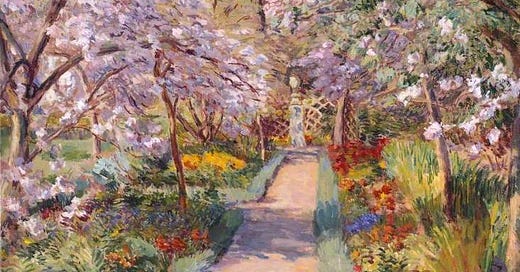



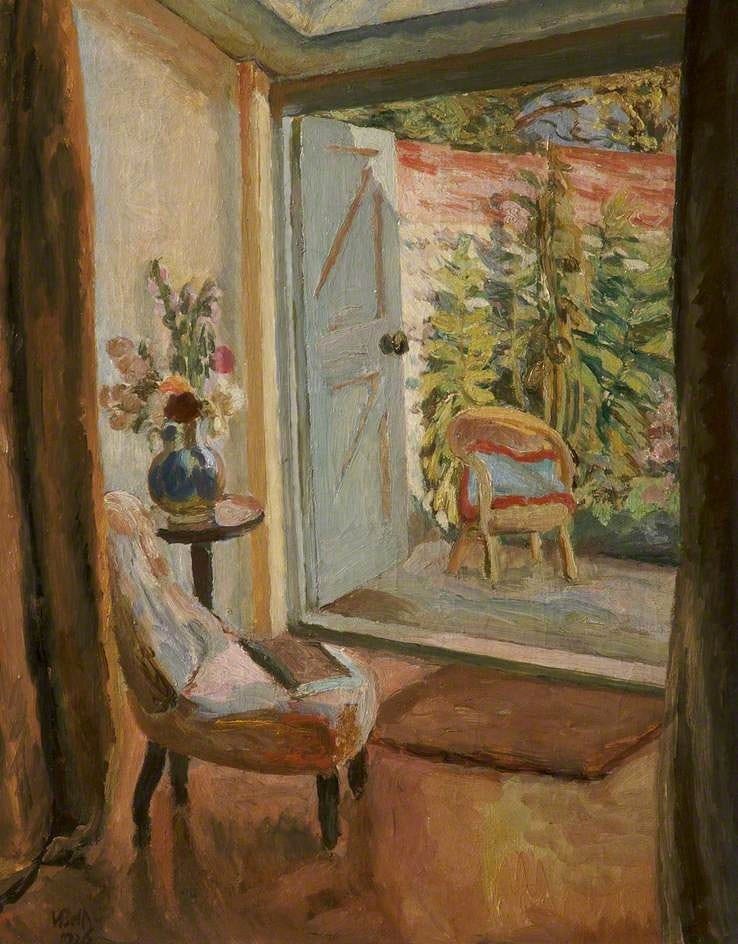
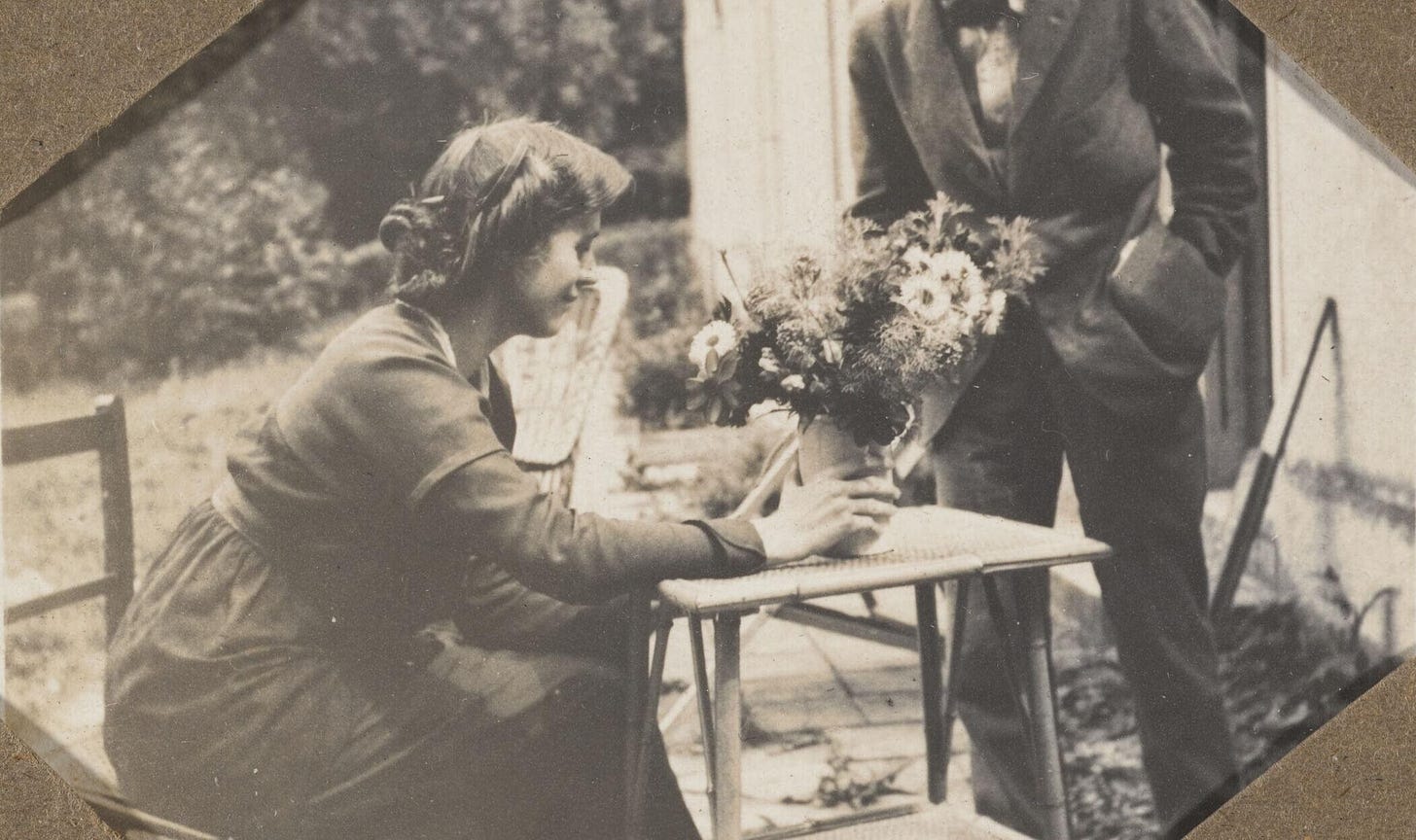


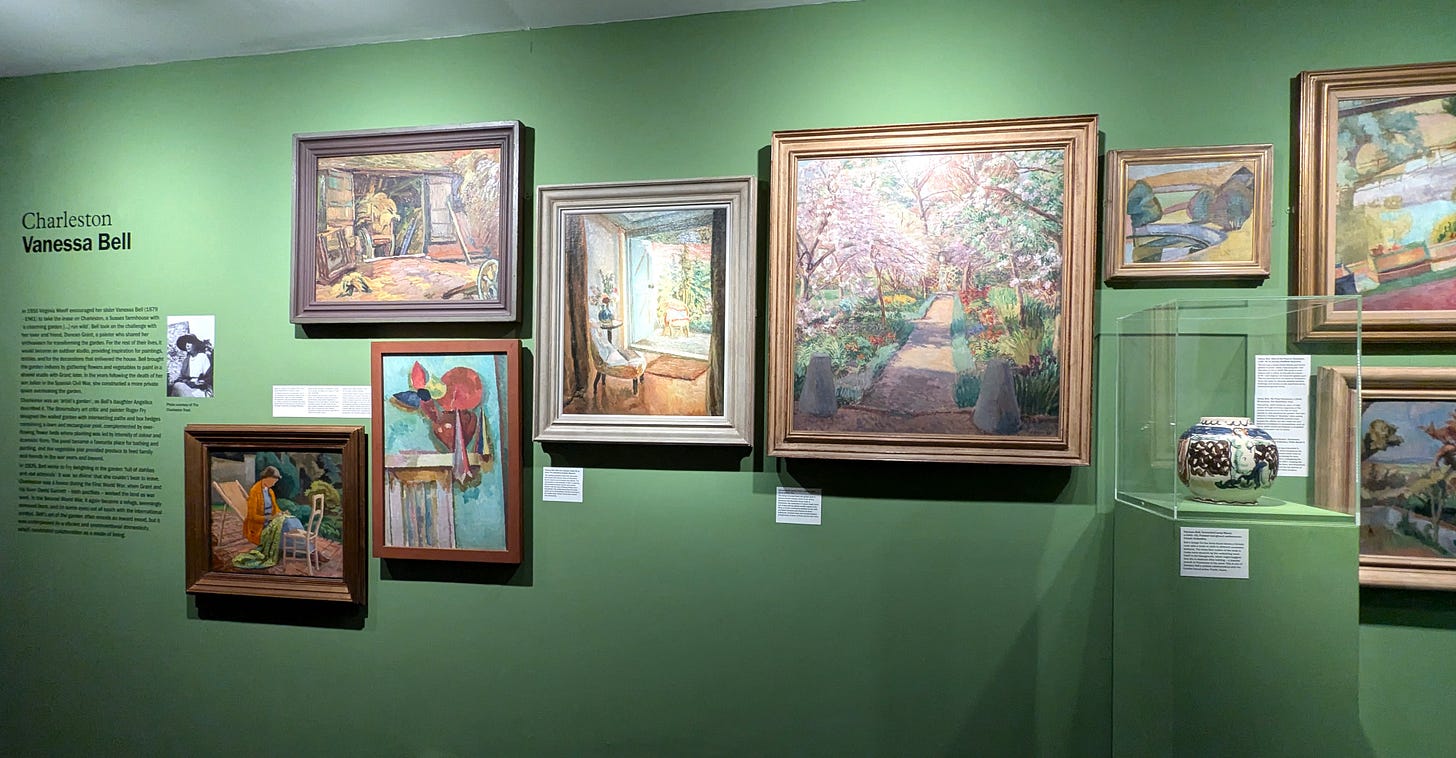

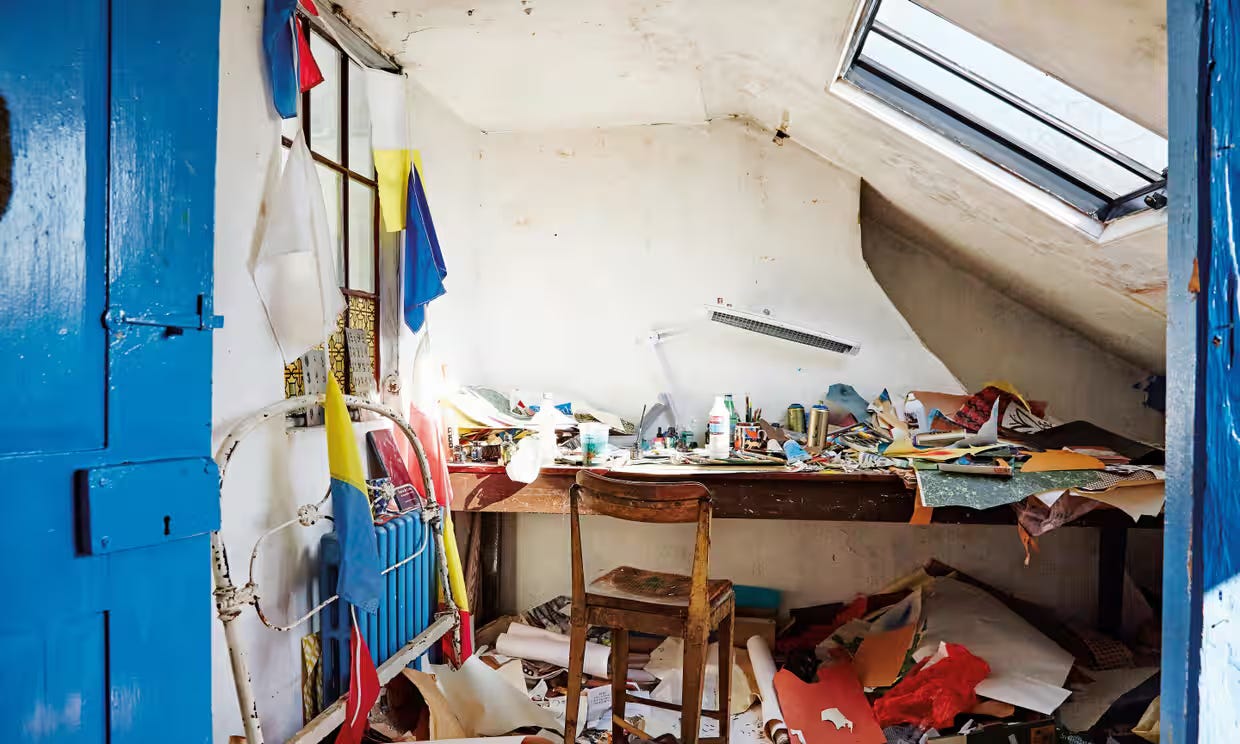
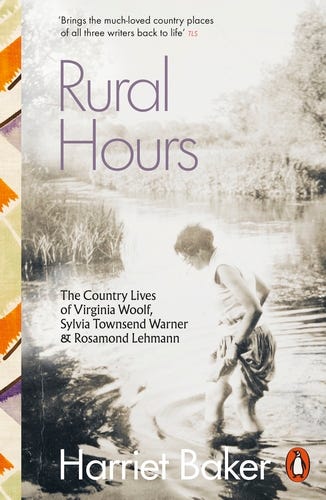
Sometimes I’m saddened by the fact that I didn’t know Vanessa Bell was Virginia Wolff’s sister. I was an art major at one point but shifted to Literature, where I met Virginia. I have since neglected much of my creative self engulfed in raising sons, prioritizing social activities or just inane busyness. Your focus on lovely mid century garden painting is so energizing and speaks to my heart; and I’m wondering why I prefer Duncan Grant’s to Vanessa’s. Perhaps the vibrancy? The ever so slight more clarity for me? And lastly, thank you from the bottom of my heart for sharing your spiffed up artist studio and your late March garden with you readers. You cannot know how much all of this is needed in our current upside country. If Duncan Grant can paint that incredible, delightful garden path during the ugliest war in history, then we can get through this now. I will be ordering both of your recommended artist biographies. Thank you!
I really enjoyed this! I currently have an exhibition called Meet Me In The Garden up. As part of it I interviewed people about their gardens. If you are interested here are the interviews https://meetmeinthegarden.bandcamp.com/album/meet-me-in-the-garden